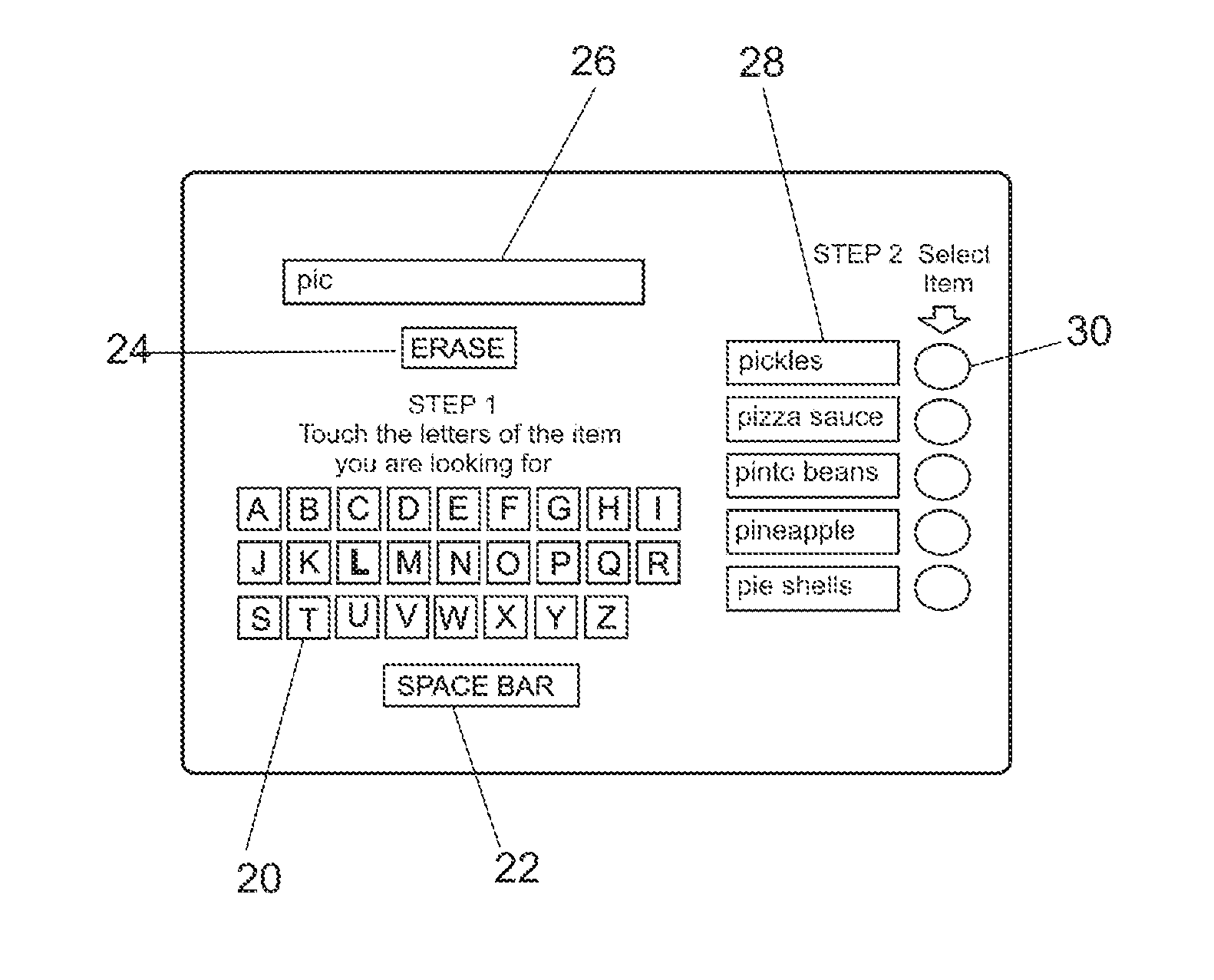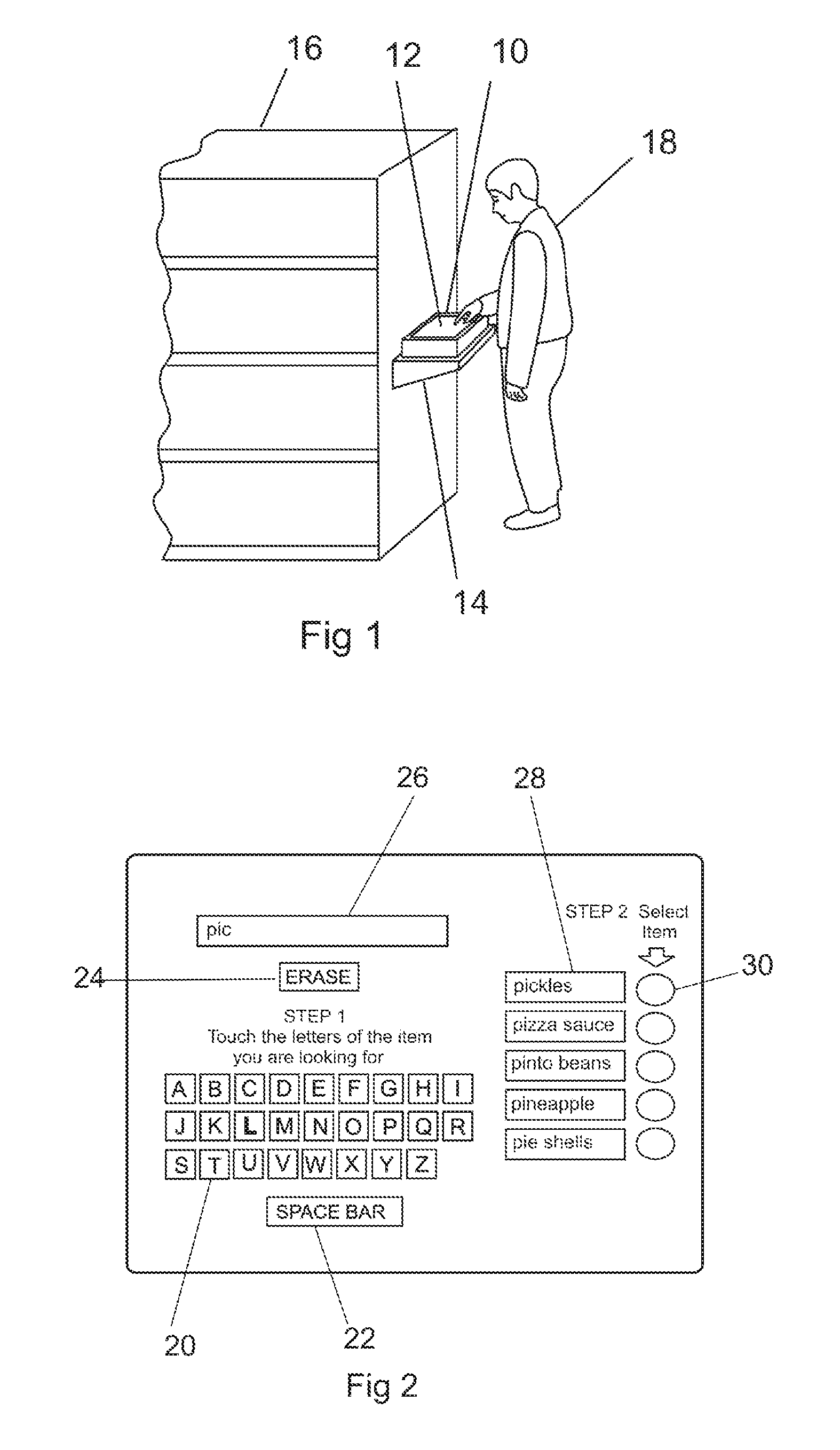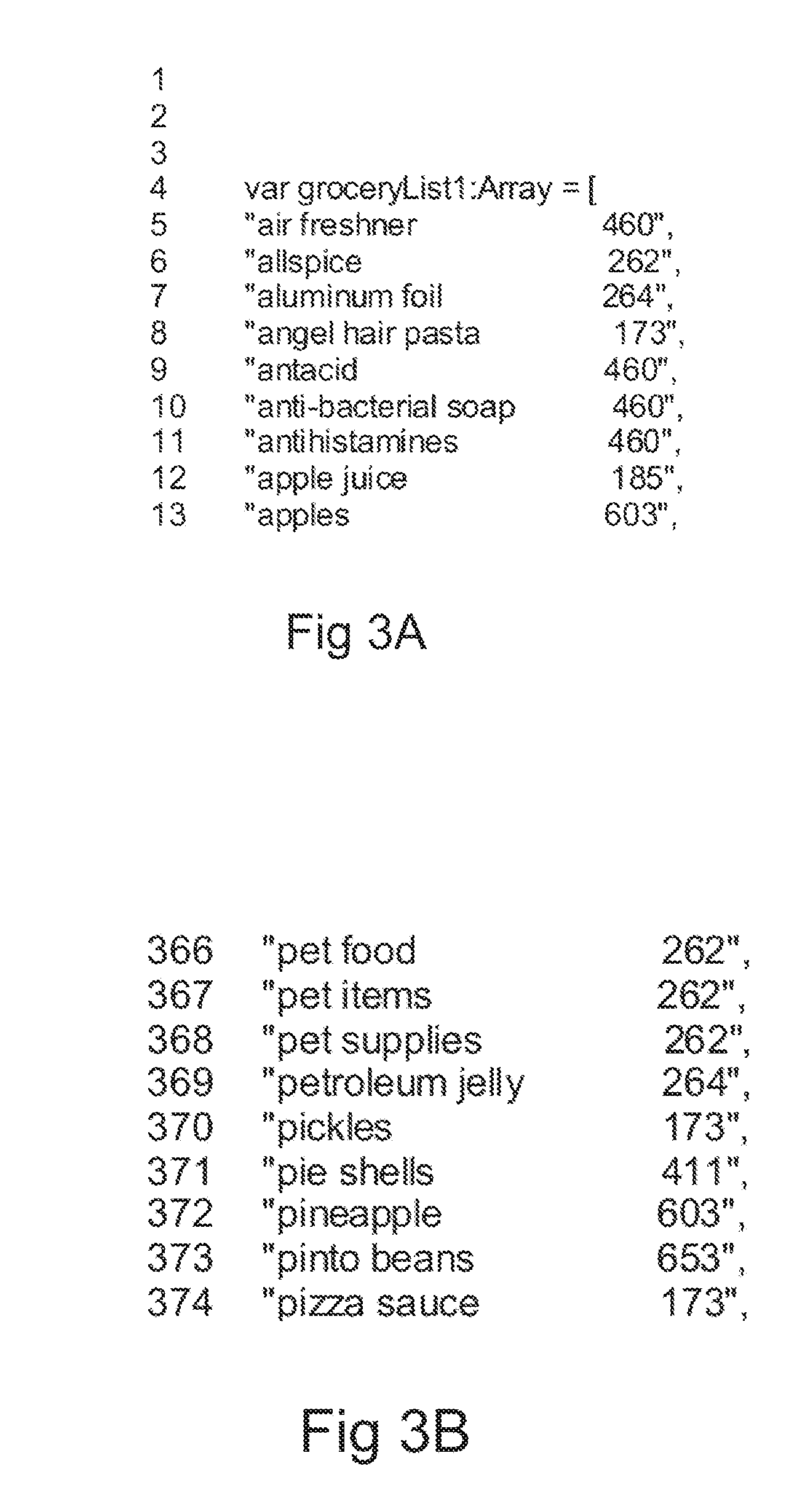Item finder system for finding items stored in storage regions
a technology for items and storage regions, applied in the field of item finder systems for items, can solve the problems of not providing an effective method of directing customers to the items in the store, stores of all types, including grocery stores, hardware stores and department stores, and relatively few staff who might be able to find items
- Summary
- Abstract
- Description
- Claims
- Application Information
AI Technical Summary
Benefits of technology
Problems solved by technology
Method used
Image
Examples
Embodiment Construction
[0063]FIG. 1 illustrates an item finder system 10 comprising an input-output display unit 12, specifically a touch-sensitive screen, mounted on a bracket 14 attached to the endwall of shelving 16 carrying items that are available for sale. A store customer 18 is shown with an index finger touching the screen. The item finder system will also comprise electronic circuitry, including processing means, such as a microprocessor, for detecting user input via the touch-sensitive screen, accessing a data storage memory means, conveniently co-located with the microprocessor, and outputting information to the customer by supplying drive signals to the input-output display unit causing the touch-sensitive screen to display selected images. It will also include a suitable input means for inputting data to the data storage memory means, if internal, using known data transfer means, for example a USB drive, a wired network connection, a wireless network connection (e.g., Bluetooth®, Wi-Fi, WiLan...
PUM
 Login to View More
Login to View More Abstract
Description
Claims
Application Information
 Login to View More
Login to View More - R&D
- Intellectual Property
- Life Sciences
- Materials
- Tech Scout
- Unparalleled Data Quality
- Higher Quality Content
- 60% Fewer Hallucinations
Browse by: Latest US Patents, China's latest patents, Technical Efficacy Thesaurus, Application Domain, Technology Topic, Popular Technical Reports.
© 2025 PatSnap. All rights reserved.Legal|Privacy policy|Modern Slavery Act Transparency Statement|Sitemap|About US| Contact US: help@patsnap.com



